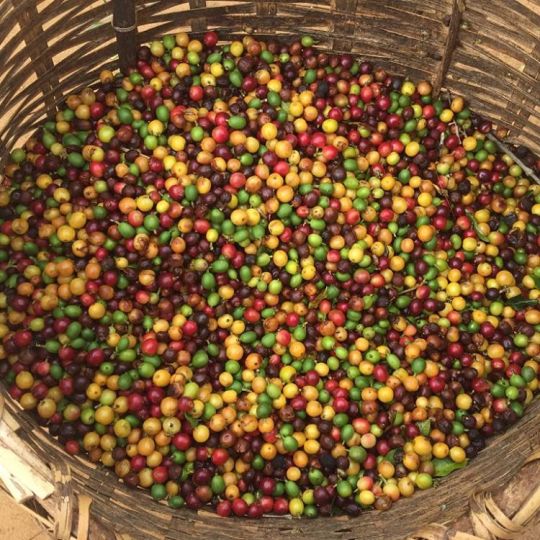Venezuela ranked third among the world's largest coffee producers until 1985, by then, it was followed by Brazil and the Dutch Indies. The nation produced between 6.5 and 6.7 percent of world production at that time, and between 15 and 16 percent of the world's soft coffee.

Coffee is part of the daily life of most Venezuelans, for many this product is essential for consumption in the mornings, at noon, at night and whenever we feel like it, but do you know its history in Venezuela? Do not? Well, sit down and take a "guayoyo" while you interact.
Now, the first coffee that was known in the country was planted by the Spanish missions in the Caroní river basin in 1730. Then, in 1784 when the first coffee plantation was made in the gardens of the village of Chacao, in the recognized Hacienda La Floresta, Blandín owned by Bartolomé Blandín and San Felipe Neri.
He took the main item of export
Step by step, coffee was displacing cocoa as the main export item in the Venezuelan economy. In addition, the living conditions of the Andean peoples, especially Mérida, were modified, optimizing all the social and infrastructure areas of the state.
It opened roads and fluvial channels, as well as trade and exchange with the port of Maracaibo, where coffee was exported to Europe and North America and then again invest in farmers with products and technologies imported from abroad.
The proliferation of coffee cultivation in the country takes place within a context of significant changes in production. Since the beginning of the 19th century, the worldwide consumption of this product is very fast, especially in the United States, which imported around 100 thousand bags a year, which represented less than 10% of world consumption.
.
.
.
El café es parte del día a día de la mayoría de los venezolanos, para muchos este producto es esencial para el consumo en las mañanas, al mediodía, en la noche y cuando se nos antoje, pero ¿conoces su historia en Venezuela? ¿No? Bueno, siéntate y tómate un "guayoyo" mientras te relacionas.
Ahora bien, el primer café que se conoció en el país fue sembrado por las misiones españolas en la cuenca del río Caroní en 1730. Luego, en 1784 cuando se realizó la primera plantación de café en los jardines de la aldea de Chacao, en la reconocida Hacienda La Floresta, Blandín propiedad de Bartolomé Blandín y San Felipe Neri.
Se llevó el principal rubro de exportación
Paso a paso, el café fue desplazando al cacao como el principal rubro de exportación en la economía venezolana. Además, se modificó las condiciones de vida de los pueblos andinos especialmente de Mérida, optimizando todos los ámbitos sociales y de infraestructura del estado.
Abrió caminos y canales fluviales, así como el comercio e intercambio con el puerto de Maracaibo, donde se exportó café a Europa y Norteamérica para después volver a invertir en los agricultores con productos y tecnologías importados del extranjero.
La proliferación del cultivo del café en el país, se desarrolla dentro de un contexto de cambios significativos en la producción. Desde comienzos del siglo XIX, el consumo mundial de este producto es muy rápido, especialmente en Estados Unidos, que importaba a inicios del siglo unos 100 mil sacos anuales, que representaba menos del 10% del consumo mundial.
Hi @madlagc tu post está super interesante.
This made me giggle
If somebody is reading this and doesn't know what is a "Guayoyo", well, it is basically an Americano with a little bit more water.
Hace un tiempo hice un curso de barismo y recordé que tengo unas notas sobre el origen del café en algún lado.
En tu post dices que:
Y es correcto, Joseph Gumilla fue quien lo sembró.
Downvoting a post can decrease pending rewards and make it less visible. Common reasons:
Submit